High cost for useless public institutions
High cost for useless public institutions
The 2018 state budget law stipulates the following: “Since many public institutions and businesses have become useless and in order to reduce the state budget deficit, we propose the abolition of a number of public institutions and businesses.” What are these institutions? Could they be abolished? What would the functional, administrative, and financial impacts and implications of such a move be?
Establishment of Public Institutions
Decree No. 4517 (general regulations of public institutions) issued in 1972 establishes public institutions and defines their role and functions. Key functions include:
- Public institutions are the institutions occupying a public facility and having legal personality and administrative and financial independence.
- Public institutions shall be established, integrated, and abolished by decrees adopted by the Council of Ministers.
- Each public institution shall have a specific purpose, functions, duty station, scope of work, and financial, administrative, and technical means.
- A public institution shall be administratively supervised by a ministry based on the nature of its work.
- The ministry concerned shall appoint a government commissioner at the public institutions.
- Public institutions shall be managed by a reportorial authority run by a Board of Directors, and an executive authority headed by a Director or Director-General. The Board of Directors is composed of three to seven members, including the Chairman and Deputy Chairman appointed by a decree issued by the Council of Ministers.
- The Board of Directors’ members shall be appointed for a three-year renewable or extendable term. As for the existing board, it could pursue its actions until the appointment of a new board.
- The Chairman and the members of the Board of Directors are not entitled to any salary or indemnity. They only receive attendance compensation, the amount of which is determined by a decree issued by the Council of Ministers (the amount of compensation often ranges between LBP 200,000 and LBP 300,000 per session, with a rate of four to five sessions per month).
Board of Directors’ Tasks
The Board of Directors oversees the implementation of public institution’s policy, guides its activities, and approves the following:
- Staff regulations
- A financial system
- A program of action and projects
- The institution’s annual budget and statement of account
- Treasury loan requests
- Materials and works transactions
- Tariffs, purchase and selling prices, and service allowances provided to customers by the institution (such as electricity, water, transportation, etc.)
- The Board meets at the institution headquarters at the invitation of its Chairman at least twice a month and whenever necessary.
Director-General
A Director-General appointed by a decree issued by the Council of Ministers heads the executive authority of the public institution. The post of Director-General is often confused with the post of Chairman.
The Director-General shall:
- Recruit the employees following the approval of trusteeship authority.
- Implement the Board of Directors’ decisions.
- Coordinate actions among the institutions’ units.
- Ensure proper savings and use of public funds, materials, and equipment belonging to the public institution.
Trusteeship Authority: The Minister
The competent Minister shall exercise the trusteeship authority over the public institutions supervised by the Ministry. The Minister shall confirm the Board of Directors’ decisions concerned with the following subjects:
- Staff and internal regulations
- Financial and investment systems
- Programs of action
- Annual budget and statement of account
- Use of financial reserves
- Treasury loan requests
- Lending and borrowing
- Tariffs, purchase and selling prices, and service allowances provided by the public institution
- Materials and works transactions
- Providing assistance
The trusteeship authority shall decide on these requests within one month of the date of notification.
Oversight of Public Institutions
Although public institutions are subject to the oversight of the Civil Service Board, the Central Inspection Bureau, and the Ministry of Finance, and are exposed to post hoc review by the Court of Audit under the pretext of rapid completion of works, they have failed to achieve their goal, thereby contributing to the squandering of public funds.
The Court of Audit exercises after-the-fact control through a special committee called the Public Institutions Oversight Committee and is charged with auditing the annual financial accounts of these institutions at the end of the year. This review becomes essentially useless since it is only done after decisions are made.
Number of Public Institutions
Table No. 1 below lists the 46 Lebanese public institutions (investment, services, financial, development) by the year of establishment.
Table No. 1: Lebanese public institutions, their establishment date, trusteeship authority, and functions.
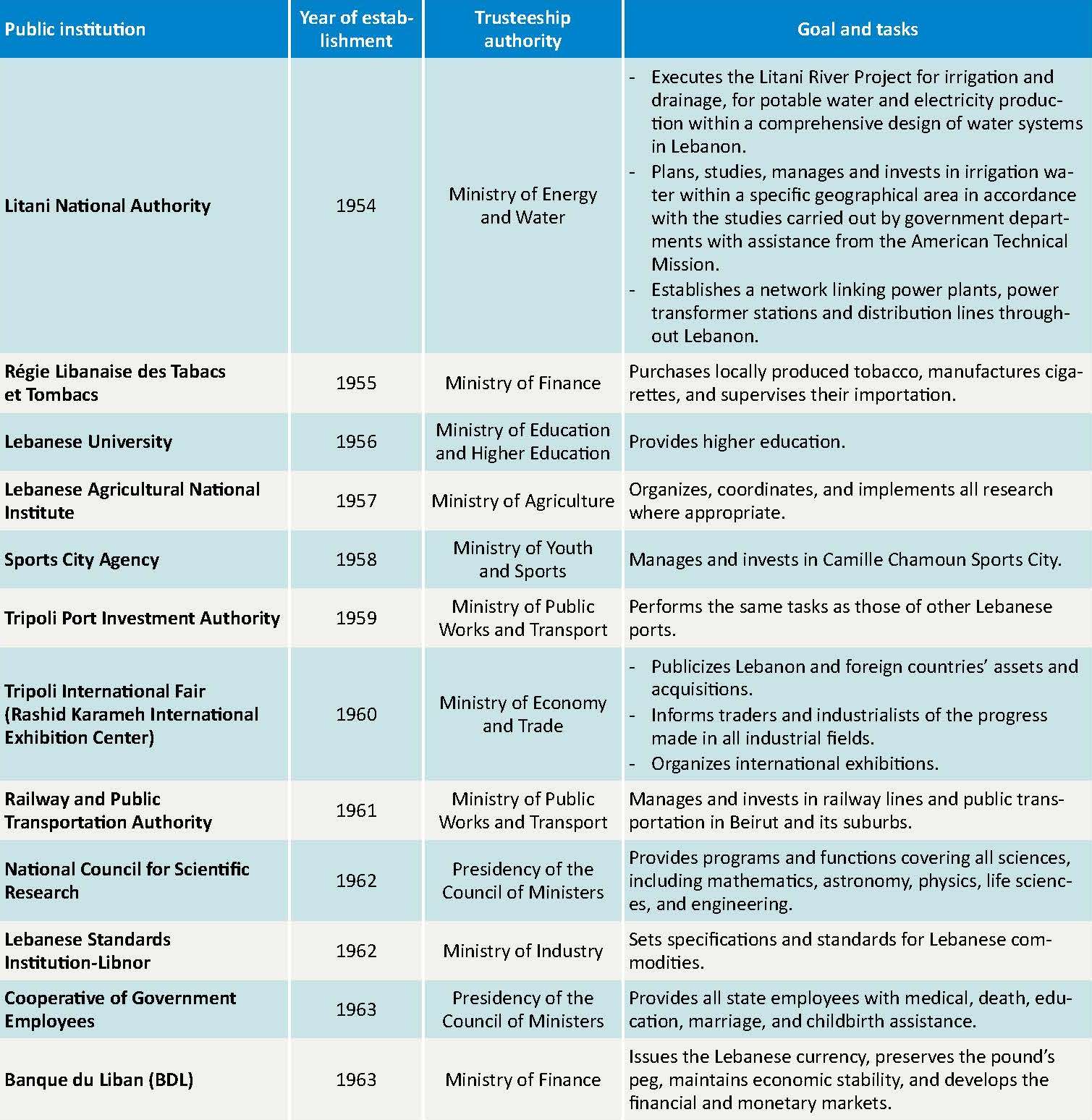
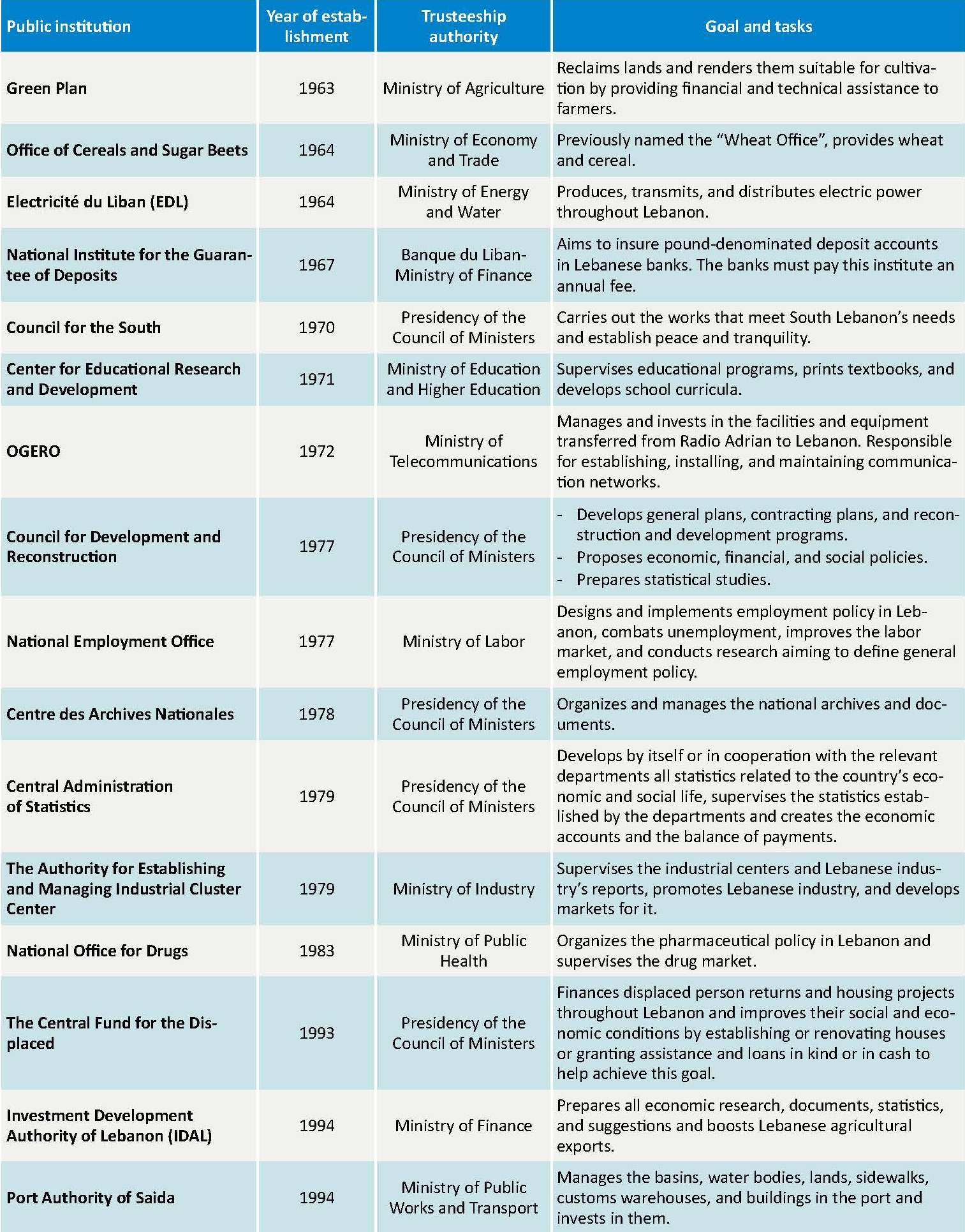


Source: Decrees and laws establishing public institutions.
Public Hospitals
In order to manage the Ministry of Public Health’s hospitals, Law No. 544 of July 24, 1996 (and its amendments) provides for the establishment of public institutions linked to the Ministry of Public Health and having public legal entities and administrative and financial autonomy. The aim was to promote government hospitalization through Lebanese hospitals, but this has not been achieved as the majority of hospitals have entered within the framework of political and regional quotas, as is the case with most government departments. Most of the public hospitals are partially functional, and maybe paralyzed and underfunded as hospital charges do not cover the dues and there are delays in government payments. Public hospitals have weighed heavily on the government without achieving the demands of citizens, who have remained prisoners of private hospitals. Table No. 2 shows that there are 34 public hospitals in Lebanon.
Table No. 2: Lebanon’s public hospitals.
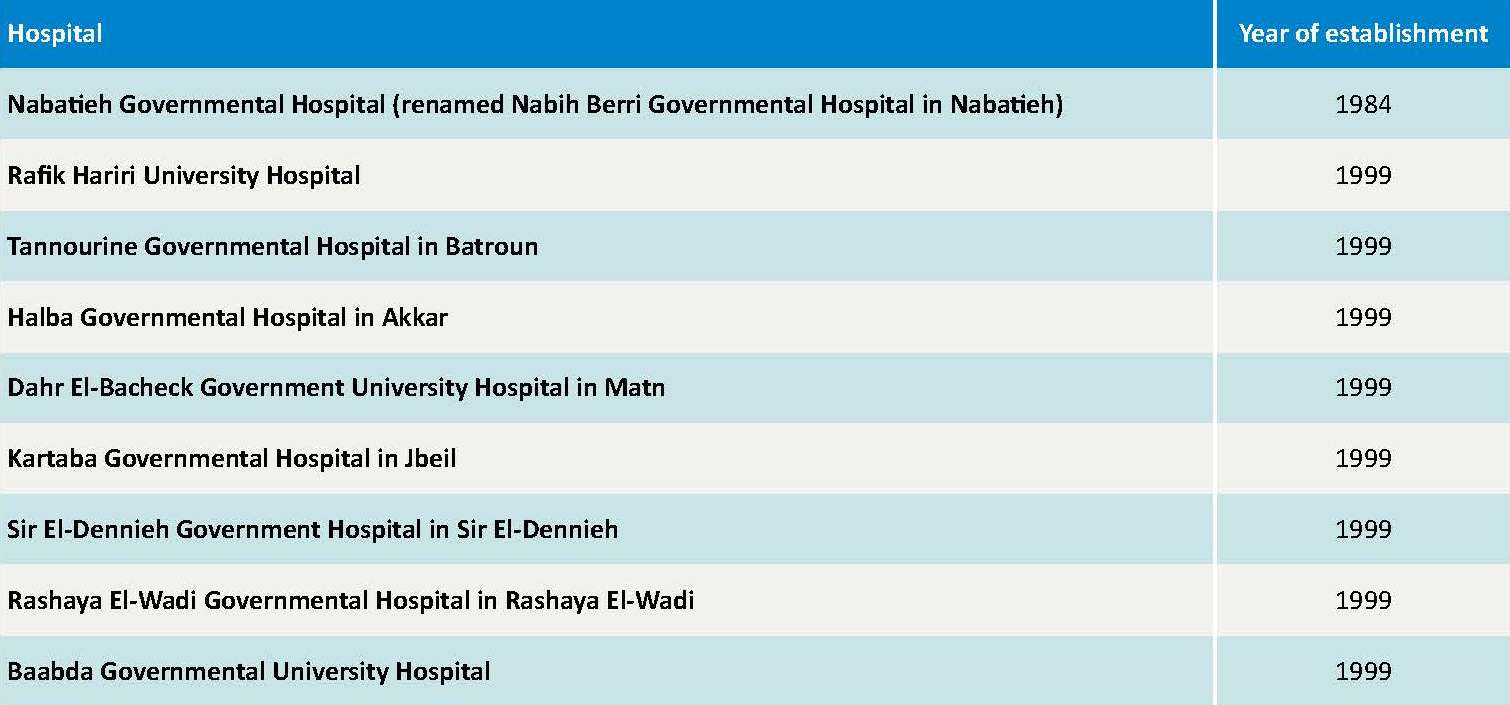
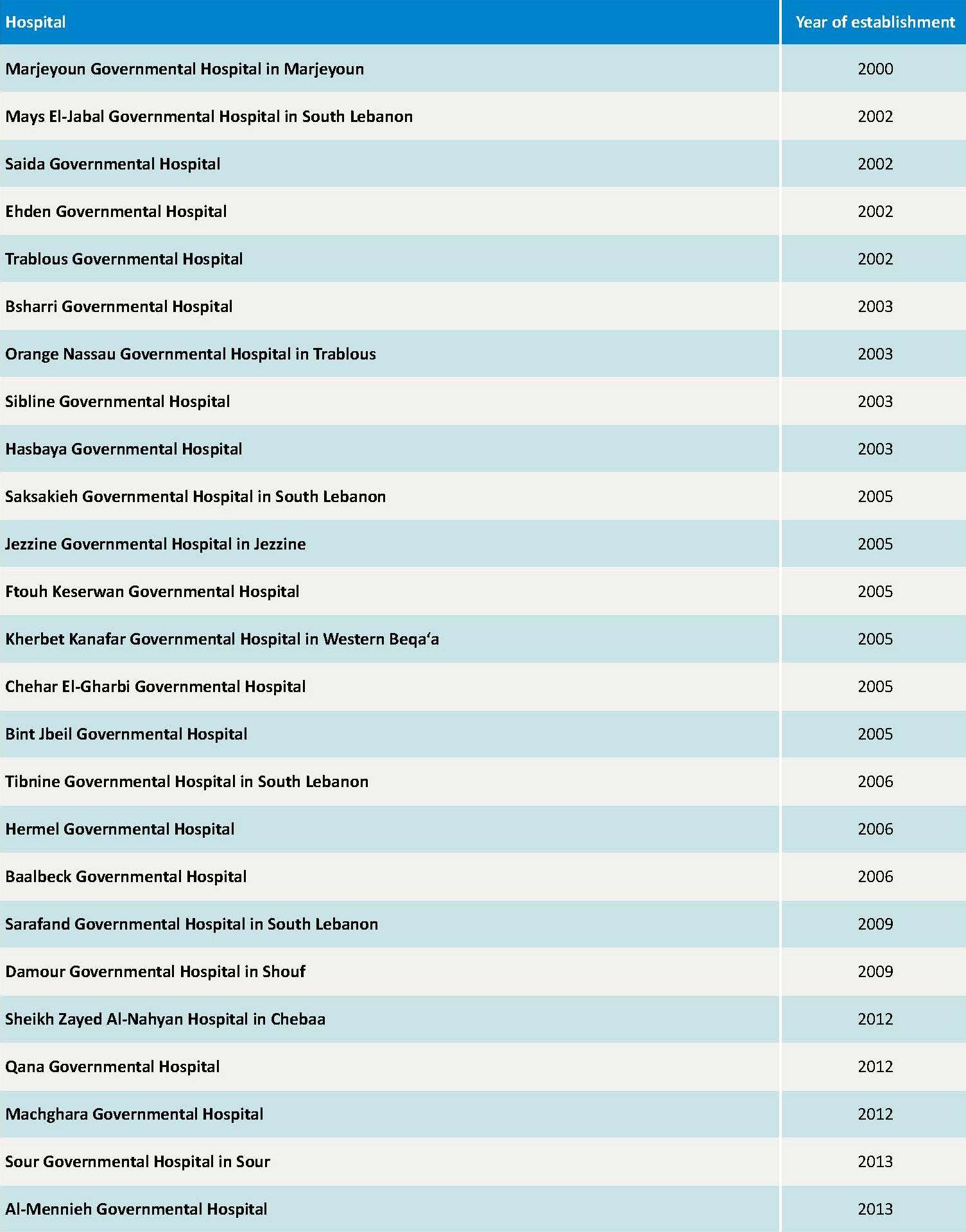
Source: Decrees for the establishment of public institutions to manage public hospitals.

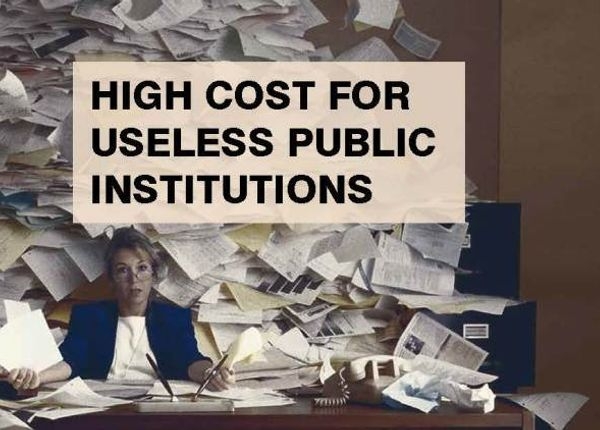






Leave A Comment